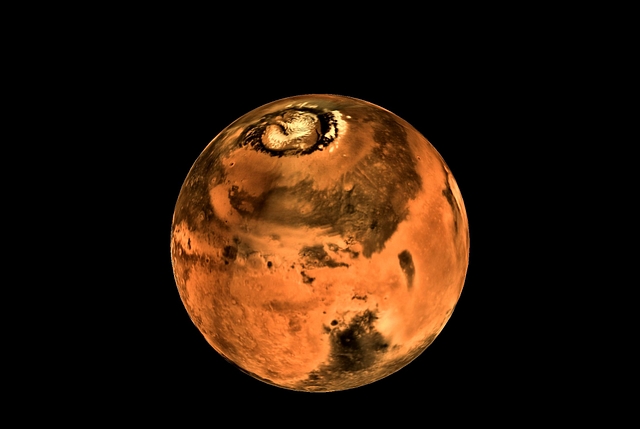
Five Years Of Mangalyaan In Pictures: What Mars Orbiter Mission Has Revealed About The Red Planet
Here are some pictures of Mars that Mangalyaan, India’s first interplanetary mission, captured in the last five years.
On this day five years ago, India truly became a spacefaring nation as its first interplanetary mission—Mangalyaan—successfully entered Martian orbit. Just hours later, it sent the first pictures it had taken of the red planet and continues to send more since.
Designed to survive for six months, Mangalyaan has been in the Martian orbit for five years now, using on-board equipment to study the Martian surface features and the composition of its atmosphere. A technology demonstrator, Mangalyaan carried multiple science payloads, such as a Methane Sensor, a Mars Exospheric Neutral Composition Analyser and a Mars Colour Camera.
Over the last five years, these payloads have churned interesting results.
The Mars Colour Camera, which has 16 different modes of exposures, has been used for imaging the Martian surface for morphological/structural mapping. It is capable of imaging the surface of Mars in three colours and in varying spatial resolution between ~20 m to ~4 km. Pictures taken by the Camera have helped ISRO answer many questions about the red planet.
Among other things, the Mars Orbiter Camera has been used to image the far side of Deimos, the farthest of the two Moons of Mars. It has also managed to capture a picture of Phobos, the other natural satellite of Mars.
It has also photographed the various type of clouds over Olympus and Elysium Mons (mountains or volcano on a celestial body). They have a unique morphology and are known to form rays around the central disk of the Mountain.
Mangalyaan also imaged Olympus Mons, a large shield volcano (a wide volcano with shallowly-sloping sides) on Mars from various angles. The volcano, also referred to as the tallest mountain on any planet in the Solar System, is 22 km (72,000 ft) high, two and a half times Mount Everest's height above sea level.
With a diameter of more than 600 km, its size is similar to that of the US state of Arizona. In comparison, the largest volcano on Earth, Mauna Loa in Hawaiʻi, is only around 10 km high and 120 miles in diameter.
It also imaged the Arsia Mons, which is around 20 km high.
Arsia Mons is nearly 450 km in diameter, and its summit caldera is 120 km wide.
Using the Camera, ISRO scientists also observed the decrease in the area of Mars’ North Polar region covered with ice due to sublimation of dry ice. During the imaging period, the area covered with ice decreased from 9,52,700 km square to 6,33,825 km square.
ISRO also employed the Camera to image the Valles Marineris (Mariner Valley). It is a vast canyon system that runs along the Martian equator. The canyon system is around 4000 km long and reaches depths of around 7 km at some places.
Researchers have concluded that Valles Marineris is a large tectonic "crack" in the Martian crust and was formed as the red planet cooled.
It is believed that molten rock pushed through the several large volcanoes in the Tharsis region of the red planet may have led to the formation of Valles Marineris.
“As molten rock pushed through the volcanic region to form the monstrous volcanoes 3.5 billion years ago, the crust heaved upward. The strain cracked the crust, causing large faults and fractures across the planet's surface. Such fractures, growing over time, birthed the enormous canyon system,” Space.com suggests.
Near the eastern flanks of Valles Marineris, these are some channels which various researchers believe may have been formed by water.